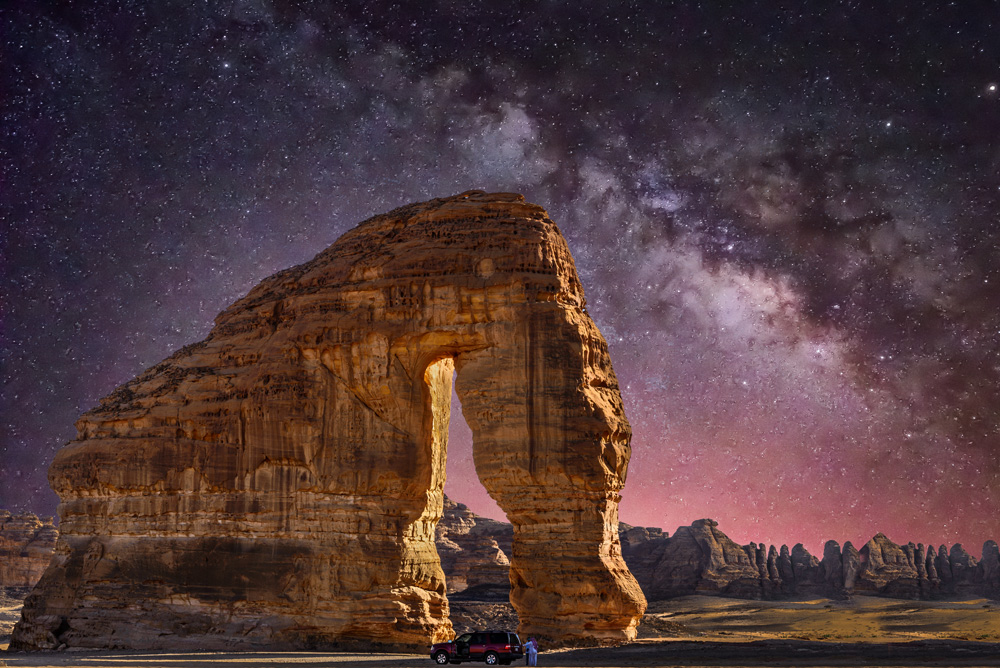
By now, you’ve probably heard of Saudi Arabia’s latest efforts to revamp its economy, open itself up to mainstream tourism, provide women in the Kingdom with more rights, mobility, and work opportunities, and modernize its society. The ambitious reforms that have begun to sweep the entire country are part of Vision 2030, Saudi Arabia’s national plan to move away from oil dependency. Under this vision, which is being spearheaded by the Kingdom’s young, visionary crown prince, Mohammed Bin Salman, Saudi Arabia has been focusing on one area that has been relatively unknown to the outside world until now: its heritage and archaeological wonders.
Over the past year, Saudi Arabia has been digging up new locations and revisiting existing sites known only to its local populace, in an attempt to better develop its cultural and heritage sector, as well as preserve its rich history and natural offerings. In a country that has snowy peaks in its north, untouched shores and pristine waters along its southern coasts, and green spaces and stunning wildlife across various regions, Saudi Arabia is currently focusing on developing historical sites such as its latest revelation, Al Ula (in parallel to boosting tourism centered on its natural landscape).
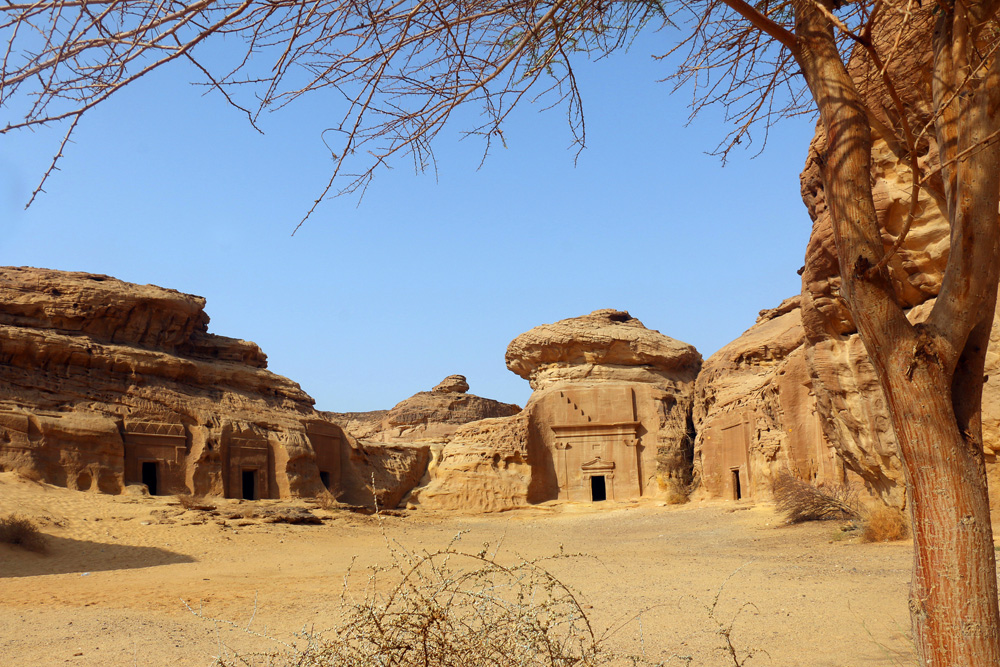
Al Ula, Saudi Arabia
Renowned locally for its archaeological remnants, some over 2,000 years old, Al Ula actually dates back some 5,000 years and is home to centuries-old sites, ancient tombs, and natural features. This ancient city was strategically located along the incense route, making it a key stop on the road between the Mediterranean and the Arab world, and far beyond to Asia and Africa. As part of its efforts, Saudi Arabia plans to open Al Ula’s rich history and potential hiking trails to the world in as little as four years.
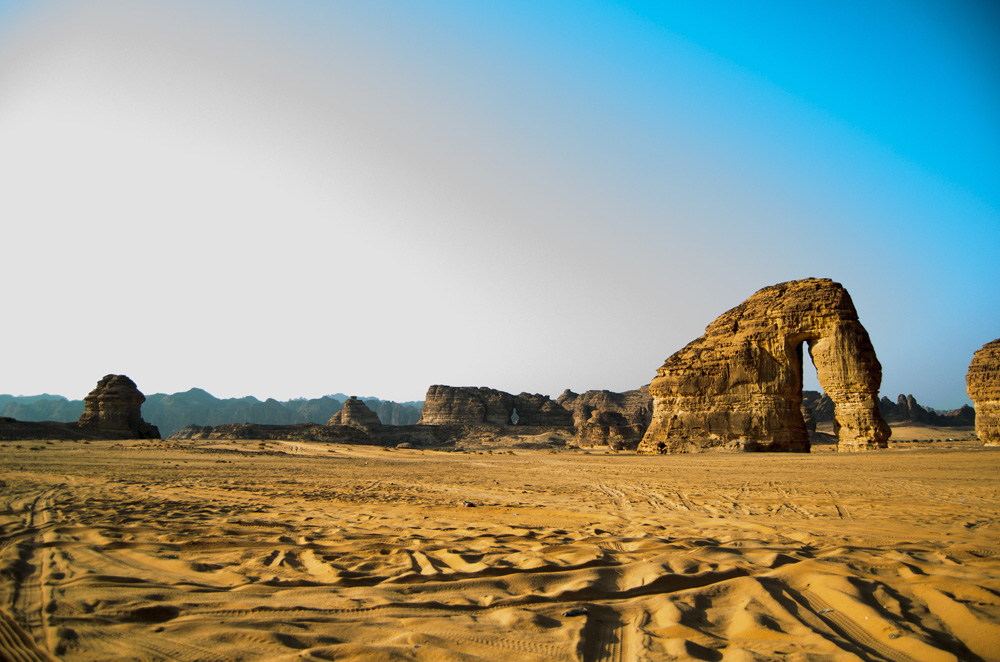
Elephant Rock, Al Ula, Saudi Arabia
Al-Ula, which spreads over 22,500 square kilometers of golden sandstone and oases, has hosted a number of ancient civilizations such as the Dadanites, the Lihyanites, and Nabateans, with evidence showing that the ancient Greeks and Romans may have also passed through the city. In fact, the Nabataeans (1st century AD), the same civilization that created the world-renowned historical site of Petra in Jordan, are said to be the architects of Al Ula’s Mada'in Salih, also known as “Al-Hijr” or “Hegra.”
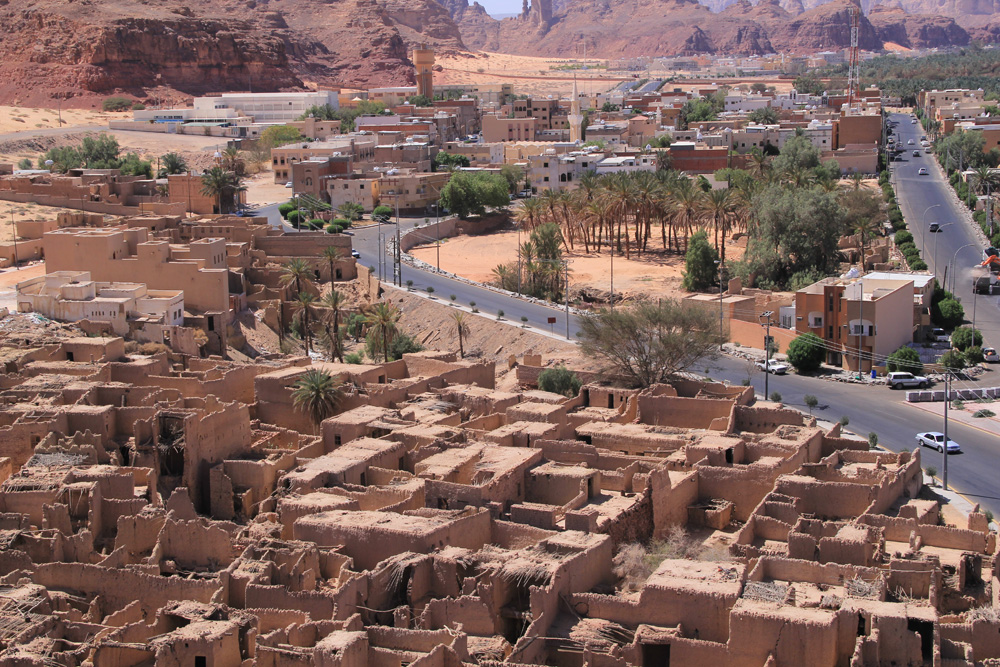
Mada'in Salih, Al Ula, Saudi Arabia
Mada'in Salih, a collection of over 100 impressive tombs carved into rocky outcrops in Al Ula and, today, one of four UNESCO world heritage sites in Saudi Arabia, constitutes the Nabataeans kingdom's southernmost and largest settlement after Petra, its capital. Al Ula’s popularity as a travel route died down for a few hundred years as people of the region began developing seacrafts that could sail the Red Sea, but it was once again revived when Islam spread across the region, becoming the main route for pilgrims coming from Syria. It is also believed that the Prophet Mohammed himself visited the Wadi Al-Qura in Al Ula valley a few times, both as a child and an adult.
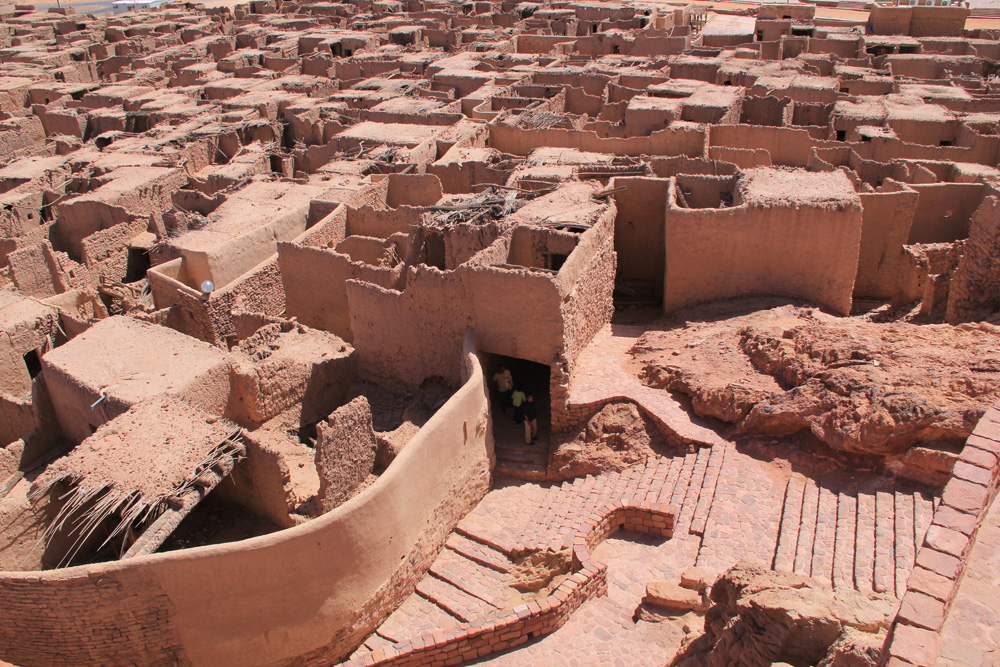
With the different peoples who have called Al Ula home and the historical significance of this place over centuries, it is no wonder Saudi Arabia has now placed its interests in transforming this site into a major tourist destination. In July 2017, a special body called the Royal Commission for Al Ula (RCU) was set up to oversee the task of bringing Al Ula to the world’s attention. The body hopes that Al Ula will receive its first visitors in four years and, by 2035 when the project is set to be completed, it hopes to see around 1.5 million tourists visiting the region annually.
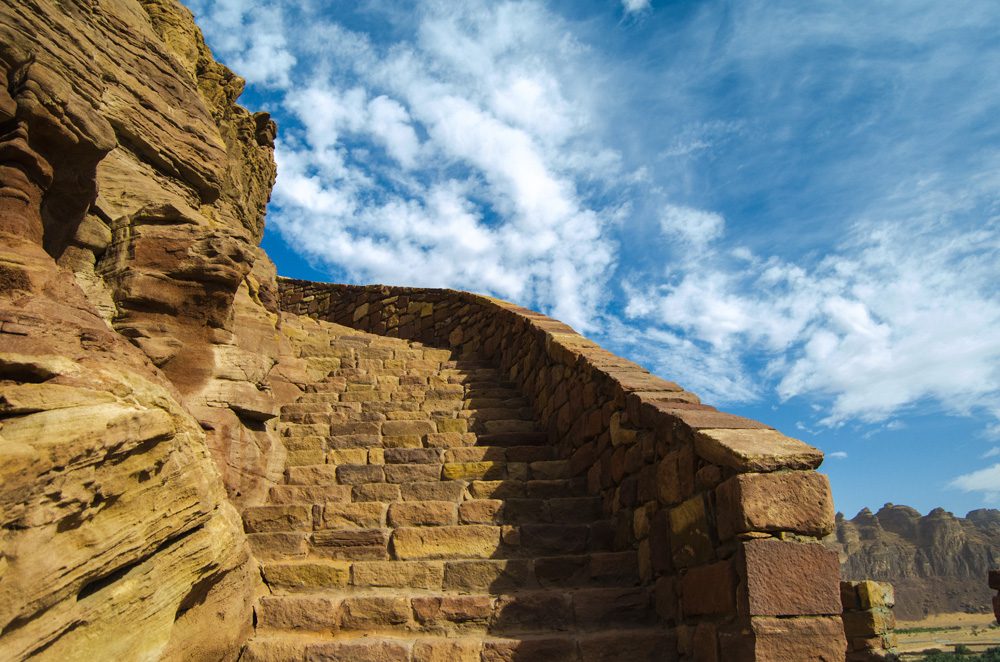
Al Ula fort, Al Ula, Saudi Arabia
Since March of this year, the RCU team has been tasked with carrying out what is believed to be Saudi Arabia’s largest ever archaeological survey. According to a recent report by CNN, the team has already identified “thousands of archaeological sites, found evidence suggesting that people have lived in the area for much longer than was previously thought, and encountered bizarre structures, the function and meaning of which are shrouded in mystery.”
In April this year, the chief executive of RCU, Amr Al-Madani, explained to Arab News that the preservation of archaeological sites in the region and the development of tourism are of equal importance to the country.
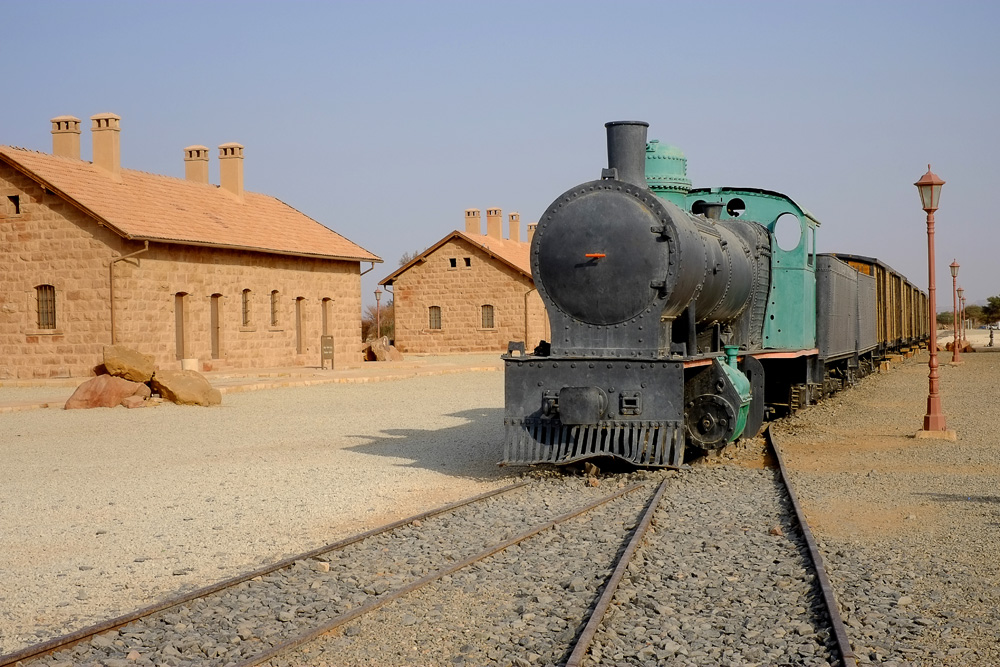
Restored Hejaz railway train, Al Ula, Saudi Arabia
“We are in the lucky position of starting with a blank canvas so we can learn from the mistakes others have made in the past. What has lasted 5,000 years should not be ruined in 50. We are looking at sustainable tourism — both in the sense of respecting nature and also because we want our tourism industry to be long-term. We want to give visitors the best experience we can, balanced against the need to preserve the assets we have. We don’t want to be a case study for someone in the future looking at what went wrong,” he told the news site.
Across Saudi Arabia, other archaeological sites have also fallen within the country’s development plans. During the second quarter of this year, the Saudi Arabia’s General Tourism and Heritage Authority (SCTH) registered 43 new archaeological sites. These new locations come in addition to 25 other archaeological sites that were approved in May for registration by SCTH.
In addition, the Saudi government named Gerard “Jerry” Inzerillo CEO of the Diriyah Gate Development Authority (DGDA) earlier this month, tasking him with spearheading a transformative initiative to restore the historic birthplace of Saudi Arabia.
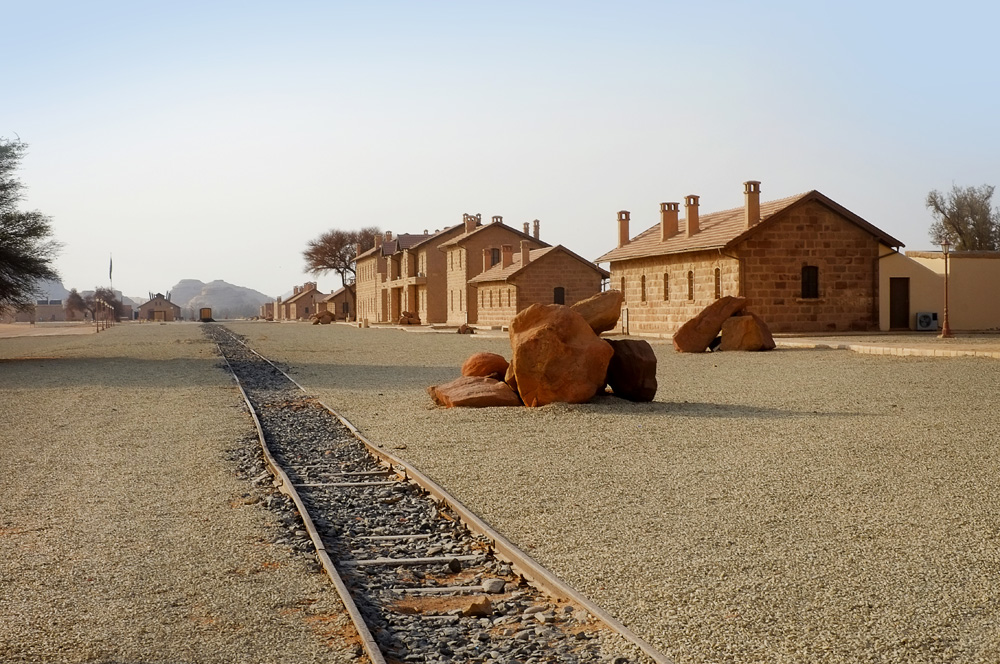
Restored Ottoman barracks and train station, Al Ula, Saudi Arabia
Along with identifying new sites, more than 1 billion US dollars were allocated earlier this year to the Custodian of the Two Holy Mosques’ program, which to date includes: the creation of 18 museums and 80 heritage sites; the restoration and preparation of 18 villages and traditional towns; and the opening of 17 centers for artisans to serve as incubators for the development of their businesses, factories for their production, and outlets for the sale of their products.
Aside from focusing on developing its historic sites, Saudi Arabia has also been working on other entertainment offerings. Today, it is building a $500-billion transnational city and economic zone called NEOM, a string of resorts on some 50 islands along its Red Sea coast dubbed the Red Sea Project (which is said to be close to Mada'in Salih), Qiddiya, a multi-billion dollar entertainment resort that will be almost 2.5 times the size of Disney World, and a Six Flags-branded theme park in the capital city of Riyadh.

















